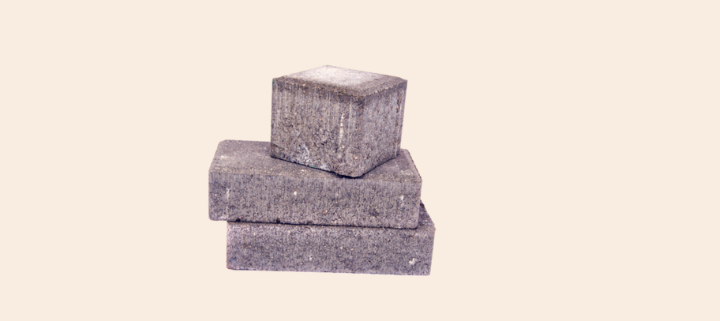Can You Put Pavers on Top of Old Concrete? [Answered By Expert]
Can You Upgrade Old Concrete Without Removing It?
People often look for ways to improve outdoor surfaces without removing existing materials. Laying pavers over an old concrete base provides an easy way to upgrade patios, driveways, or walkways without major demolition. The process requires proper steps to ensure stability, durability, and an attractive finish.
Why Use Pavers Over Concrete?
Using pavers as a new surface offers several advantages. Whether for appearance, function, or cost, covering an aged slab with pavers can be a smart solution.
Better Look
Plain concrete often cracks, stains, or becomes discolored over time. Pavers introduce texture, color, and pattern choices that enhance outdoor spaces.
A range of shapes, colors, and finishes allows for unique designs. Natural stone, brick, or concrete pavers give a custom look. Weathered surfaces get a fresh, modern update without complete removal.
Stronger Surface
A concrete base provides a solid foundation for pavers, reducing movement or shifting.
A firm layer underneath prevents sinking or uneven spots. Less chance of weeds growing between pavers when placed on solid ground. Reduces long-term maintenance compared to loose gravel or dirt bases.
Cost Savings
Eliminating the need for removal and disposal of old material lowers expenses.
Avoids labor costs for breaking and hauling away debris. Less need for new base material saves on supplies. Faster completion time reduces installation expenses.
Challenges of Laying Pavers Over Concrete
While placing pavers over an existing slab has benefits, certain conditions must be met for the best results. Some surfaces may not provide the right structure for long-lasting stability.
Surface Condition
An uneven or damaged slab may cause problems if covered without proper preparation.
Large cracks or sunken areas indicate movement in the ground underneath.
Pooling water on the surface suggests poor drainage, leading to future issues.
Loose or crumbling sections weaken the foundation, making pavers unstable.
Height Concerns
Adding pavers on top increases the ground level, which may create issues near doors, steps, or other structures.
Raised surfaces may block doorways or create tripping hazards.
Driveways must maintain proper clearance for garage doors or vehicle access.
Edges must blend smoothly into surrounding areas to prevent uneven transitions.
Drainage Issues
Water must drain properly to avoid damage or slipping hazards.
A solid slab may prevent water from filtering through, causing puddles.
Gaps between pavers allow some drainage but may not be enough without adjustments.
Sloping the surface slightly can help guide water away from structures.
Steps for Placing Pavers Over Concrete
Proper preparation ensures that the new surface remains level, secure, and long-lasting. Each step helps to prevent movement, water buildup, or other issues.
1. Clean the Surface
Removing dirt, moss, and debris allows pavers to sit evenly.
A pressure washer removes buildup and stains.
Scrubbing with a brush and soapy water eliminates grime in textured areas.
A dry surface prevents adhesives or leveling materials from slipping.
2. Check for Stability
Examining the slab ensures it can support the new layer without issues.
Tapping different areas with a hammer reveals hollow or weak spots.
Sealing cracks prevents further damage from water infiltration.
Loose sections must be repaired or removed before adding pavers.
3. Improve Drainage
Water must have a way to escape to avoid pooling under or between pavers.
Drilling small drainage holes in low spots helps water flow through.
A slight slope directs runoff away from structures.
Permeable sand or gravel between pavers aids in absorption.
4. Choose the Right Base Layer
A layer between the old slab and the pavers helps with leveling and stability.
Sand Layer – A thin layer of sand creates a smooth, even surface.
Mortar or Adhesive – Bonding pavers directly prevents movement in high-traffic areas.
Foam or Rubber Underlayment – Soft layers help with drainage and cushioning.
5. Lay the Pavers
Arranging pavers carefully ensures a strong and visually appealing result.
Starting from one corner keeps alignment consistent.
Keeping gaps even creates a uniform look.
Cutting edge pieces ensures a precise fit against walls or borders.
6. Secure the Pavers
Holding pavers in place prevents shifting over time.
Sand or Fine Gravel – Brushing into gaps locks pavers together.
Edging Restraints – Plastic, metal, or concrete edges keep pavers from spreading.
Sealant or Bonding Agent – Helps in areas with heavy foot or vehicle traffic.
7. Finish the Surface
A final touch improves durability and appearance.
Sweeping off extra sand or dust keeps gaps neat.
Spraying water helps settle materials between pavers.
Applying a sealant protects from stains, moisture, and wear.
Best Paver Choices for Covering Concrete
Selecting the right type of paver improves performance and appearance. Different materials offer benefits depending on the location and use.
Concrete Pavers
A strong and affordable option with many styles. Uniform sizes make installation easy.
Variety of colors and finishes available. Works well for driveways, patios, or walkways.
Brick Pavers
A classic look with long-lasting strength. Traditional red or earth tones create timeless appeal.
Holds up well under weight and weather changes. Slightly rough texture provides slip resistance.
Natural Stone Pavers
A high-end choice for unique designs. Granite, limestone, or slate offer natural beauty.
Highly durable in outdoor spaces. Requires more precise placement due to irregular shapes.
When to Avoid Laying Pavers Over Concrete
Certain conditions make covering an old slab impractical or risky. Removing the concrete and starting fresh may be a better option in some cases.
- Large cracks or shifting sections suggest an unstable base.
- Poor drainage leads to frequent water buildup.
- Height restrictions make the raised surface impractical.
- Weak concrete cannot support additional weight.
Conclusion
Covering an aged slab with pavers creates a fresh, durable surface with minimal demolition. Proper preparation, material selection, and installation steps ensure a stable result. Whether improving a patio, walkway, or driveway, pavers provide an attractive and practical upgrade for outdoor areas.



